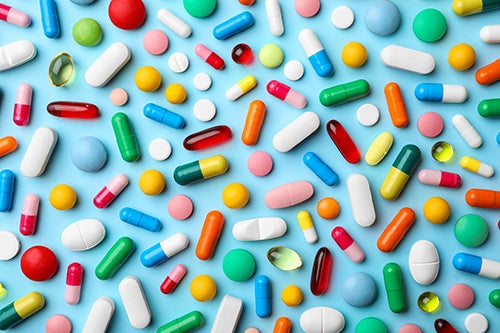Dose of Declutter – Give Your Medicine Cabinet a Clean Sweep
April 18, 2024
By: WakeMed Children's Hospital
Categories: Children's, Primary Care, Urgent Care, Emergency
Tags: medication safety
Make Medication Safety a Priority
According to Safe Kids Worldwide, approximately 60,000 children per year (that’s 4 busloads of kids per day) end up in an emergency department because they got into medicine. Poison Control Centers get a call nearly every minute about a child getting into medicine.
Lock Up Medications – All the Time, Every Time
“Keeping your medications ‘handy’ is not safe – they should always be secure and out of the reach of children,” says Adam Cochran, PharmD, WakeMed Pharmacy Supervisor. “You should not store medicine in or on counters, bedside tables, backpacks, purses, luggage, cars, desks or anywhere that can be reached by a child.”
He explains that carelessness with medication storage raises the risk of ingestion by children who either don’t know any better or are simply curious.
“Pills can look just like candy,” says Cochran. “Talk to kids about the visual similarities and importance of never putting anything in their mouth without talking to a parent or other trusted adult first. Teach them to always ask an adult first, even if a sibling or kid they know gives them something they think is candy.”
While older children should know better, there is a big concern with curiosity and peer pressure that can lead to youth stealing, sharing, and taking medications that were not prescribed for them and can be fatal.
Medications that are prescribed for adults after procedures or injuries, such as painkillers and muscle relaxers, frequently end up in the hands of teens.
“When your pain alleviates, and you stop taking these drugs, you should dispose of them immediately,” explains Cochran. “There is no reason to keep them, and WakeMed has made it easy to get rid of them with four drug takeback locations.” Find a WakeMed drug take-back bin near you.
Proper Disposal of Drugs
If you are unable to take medications to a take-back bin, information is available at fda.gov on how to safely dispose of unused and expired medications, needles and syringes.
“In general, pharmacies don’t take these items back,” shares Cochran. “You can buy a sharps container with a label for shipping, or in some communities you can simply place them in a plastic container like a laundry detergent bottle before throwing them away,” Cochran says. “Always check to see what is recommended and what resources exist near where you live.”
Cochran recommends crushing up medications and mixing them with something unpleasant like cat litter or coffee grounds before throwing them in the trash. He says some medications can be flushed, but not all should be so double check fda.gov before deciding how to dispose of them.
Other Spring Safety Checks
And, while you are in “spring cleaning” mode, it’s a great time to add a few safety tasks to the checklist. Visit safekids.org for more home safety tips.
- Check smoke and carbon monoxide detectors to make sure they are working properly; change the batteries.
- Make sure all chemicals, including regularly used cleaning products, are safely stored out of the reach of children; properly dispose old chemicals and paints.
This blog is adapted from an article in our Families First Magazine. Interested in getting future issues of Families First delivered to your home? Subscribe here.